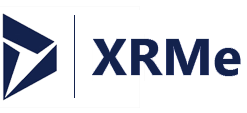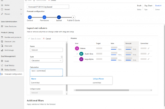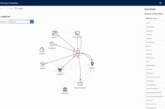Dynamics 365 PowerApp (Model-Driven vs. Canvas App)
Formerly known as Project Siena, Microsoft PowerApps is basically Software as a Service (SaaS) product powered by the Azure cloud platform. PowerApps is essentially a way to create web-based applications or mobile apps that can interact with Dynamics 365 to enhance the experience of users. PowerApps is a tool created to help people without a computing background make their own apps without having to get their hands dirty with learning computer languages, database technologies or even designs of software development. For this reason, the software is deemed a point and click sort of software development that can be used to speed up the development process by providing users with tools to help the development to move along quite fast. This means that you can easily drag and drop items relevant to your app and the code will automatically be generated in the background.
This does not mean that PowerApps is simple in any way or form. As shown below, the app provides the user with a lot of options in different contexts. Therefore, the user should know what they want and how the product will look before they begin. Without this picture in mind, the sheer volume of options and how to effectively use them can easily overwhelm a user.

Canvas vs. Model-Driven Apps
PowerApps has two types of apps that a user can choose from before starting the creative process. These are the Canvas and Model-Driven Apps. Here, we’ll look at the differences between the two apps and what sort of situations might prompt a user to choose one type over the other.
- Canvas apps
Canvas based apps have been around for about 3 years now; ever since the advent of PowerApps. They embody the whole drag and drop methodology of app creation from the very beginning. True to their name, an individual is provided a blank canvas where they can create their own apps from scratch in a PowerPoint sort of design. With this sort of app, you first create the User Interface and then link it with data sources using the host of connectors available on the platform. If you are feeling ambitious, you can even create your own bespoke connectors to suit the application’s needs.

2. Model-Driven apps
If you want to create something a bit more complex, then the model-driven apps are the way to go. Here, you also don’t need to learn code in order to create your application. However, you do need to properly determine the layout of the applications since the components you add to the app will dictate the elements you can add to the platform. While all this might sound a bit complicated, users of Dynamics 365 have already been using model-driven applications. That’s since Common Data Service (CDS) was integrated with Dynamics. You must, however, keep in mind that an additional Dynamics license must be purchased on top of the regular Office 365 license.

Here are some of the ways these two types of apps differ from the other in terms of functionality.
a) User Experience (UX)
Canvas
With canvas apps, the user has more control in the UX creation process; i.e. the look and feel of the app, allowing one to create a clean and simple U!. With a wide range of controls at the user’s disposal, the developer can configure the application to behave and appear how they want.
Model-driven
Here, the experience is more less the same as Dynamics 365 Unified Interface UX. While most UX developers have not been as enthusiastic about Dynamics UX over the years, it has its strengths over the canvas style. However, the newest version of Dynamics 365 has a better Unified Interface that’s a bit easier to use.
b) Business Environments
Canvas
Canvas apps are usually best suited for some simple, lightweight applications that will be used for a very specific reason. While it’s possible to also create complex apps with canvas apps, things can get a little dicey and complicated.
Model-driven
If you want to create something a bit more complicated with multiple functions and layers, this might be the best approach for you.
c) Data sources
Canvas
Canvas apps have some freedom when it comes to choosing a data source. They not only support CDS but also online and on-premise sources of data such as Drop Box, SQL Server, SharePoint, Twitter and Office 365 just to mention a few.
Summing up Users can create highly intuitive apps with either one of the two types of apps. However, as we have seen, each has its strengths and weaknesses. For this reason, making the decision on which platform is better to use will be determined by what you need the app to do and the environment it will be running on.



